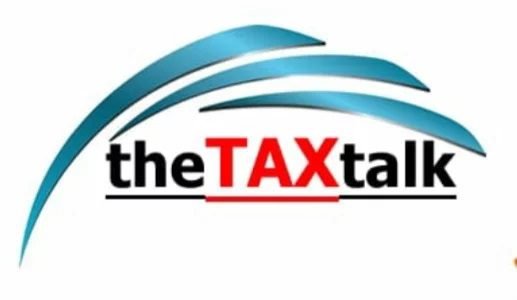![]()
No 20%? No Problem! Karnataka HC Rules CBDT Stay Guidelines Are Not Mandatory
Introduction: Game-Changer for Taxpayers
In a major relief to taxpayers facing high-pitched tax demands, the Karnataka High Court has ruled that the requirement to deposit 20% of the disputed tax demand, as per the CBDT Circular dated 29.02.2016, is directory-not mandatory.
In the case of Instakart Services (P.) Ltd. v. PCIT (Central), Bengaluru [2025] 175 taxmann.com 998, the Court quashed the rejection of a stay application that was based solely on non-payment of 20% of the demand.
This verdict is a big win for businesses, startups, and individuals grappling with aggressive assessments and provides a clear path to secure stay without upfront deposit, if justified.
The 20% Rule: What CBDT Circular Says
The CBDT, through its 2016 Circular, prescribed that taxpayers seeking a stay on demand pending appeal should normally pay 15–20% of the disputed amount. This was aimed at standardizing practices and protecting revenue interests.
However, over time, this “guideline” became a de facto rule in many cases-resulting in automatic rejections if the 20% wasn’t paid, regardless of hardship or the merits of the appeal.
The Instakart Case: Facts & Arguments
Instakart Services filed an appeal against a tax demand for AY 2020–21 and simultaneously sought a stay of demand. The authorities rejected the stay application, citing non-payment of 20% of the disputed tax.
Key points in the case:
- The rejection was based entirely on the CBDT Circular, with no consideration of hardshipor appeal merits.
- Instakart approached the High Court via writ petition, arguing that the circular was being misinterpreted as mandatory.
- Citing the earlier ruling in Flipkart India Pvt. Ltd. v. ACIT, Instakart argued that the requirement was only directory, not compulsory.
High Court’s Verdict: Practical and Progressive
The Karnataka High Court held that:
– The 20% deposit rule under the CBDT Circular is directory and cannot override the principles of justice.
– Each stay application must be decided on facts, hardship, and legal strength, not by blind application of a percentage.
– The revenue’s mechanical approach and cryptic rejection order were unsustainable in law.
– The Court restrained recovery action and directed the appellate authority to dispose of the appeal without insisting on 20% payment.
Importantly, the Court clarified that this ruling was passed in special circumstances and should not be treated as a binding precedent-but the legal reasoning is persuasive across jurisdictions.
Key Practical Takeaways for Taxpayers & CAs
1. 20% Rule Is Not Mandatory
The CBDT circular does not make 20% payment a hard condition. Stay can be granted even with lesser or zero deposit, especially in:
- High-pitched assessments,
- Genuine financial hardship cases,
- Where strong legal grounds exist.
2. Draft Stay Requests Strategically
Tax professionals must ensure that stay applications include:
- Specific reasons of hardship, liquidity issues,
- Any past relief or appellate success,
- The arguable nature of the issue,
- A commitment to cooperate in appeal hearings.
A well-supported application has a higher chance of being allowed without deposit.
3. Speak Loud: No to Cryptic Orders
The ruling reinforced that authorities must issue speaking orders. A rejection based on standard lines like “20% not paid” is legally untenable.
4. Use Instakart & Flipkart Rulings as Tools
While not precedent, these rulings are powerful persuasive authorities. Taxpayers across India can cite them while:
- Seeking stay without 20% payment,
- Opposing coercive recovery,
- Requesting protection against refund adjustments.
5. Insist on Timely Disposal of Appeals
Delays in disposing of appeals harm both revenue and taxpayer interest. The HC rightly directed disposal within two months. Taxpayers should request similar reliefs citing principles of natural justice.
Refund Adjustment and Coercive Action
The assessee in this case also sought protection against adjustment of refunds pending the appeal. While the HC didn’t directly issue directions on this point, its order restraining coercive action can reasonably be interpreted to cover such adjustments too.
If you’re facing refund holdbacks, this decision may offer a temporary protective shield.
In short, refer –
- Stay of income tax demand without 20%
- CBDT circular 29 Feb 2016
- Karnataka High Court income tax stay order
- Flipkart income tax case
- High-pitched assessment relief
- Stay of demand under section 220
- Income tax disputed demand stay procedure
Final Thoughts: Fairness over Formula
This judgment brings back focus to fairness, reasonableness, and case-specific discretion in tax administration. It prevents the misuse of a procedural guideline to impose a one-size-fits-all hardship on taxpayers.
In times when startups, SMEs, and professionals are under liquidity stress, such clarity is essential. This judgment empowers taxpayers to challenge blanket demands, avoid unjust recovery, and secure justice through procedural propriety.
The copy of the order is as under:


